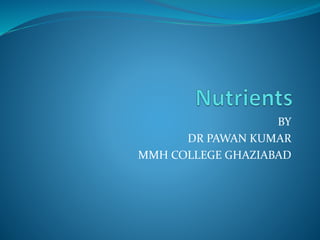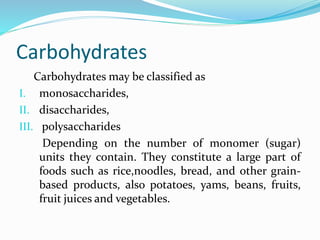Nutrients are divided into macronutrients and micronutrients. Macronutrients include carbohydrates, fiber, fats, protein, and water, and provide structural material and energy. Carbohydrates are divided into monosaccharides, disaccharides, and polysaccharides. Fats are classified as saturated or unsaturated. Protein provides structural material and enzymes. Micronutrients include minerals and vitamins which are required in smaller amounts. Minerals have structural or electrolyte functions while vitamin deficiencies can lead to disease.

























